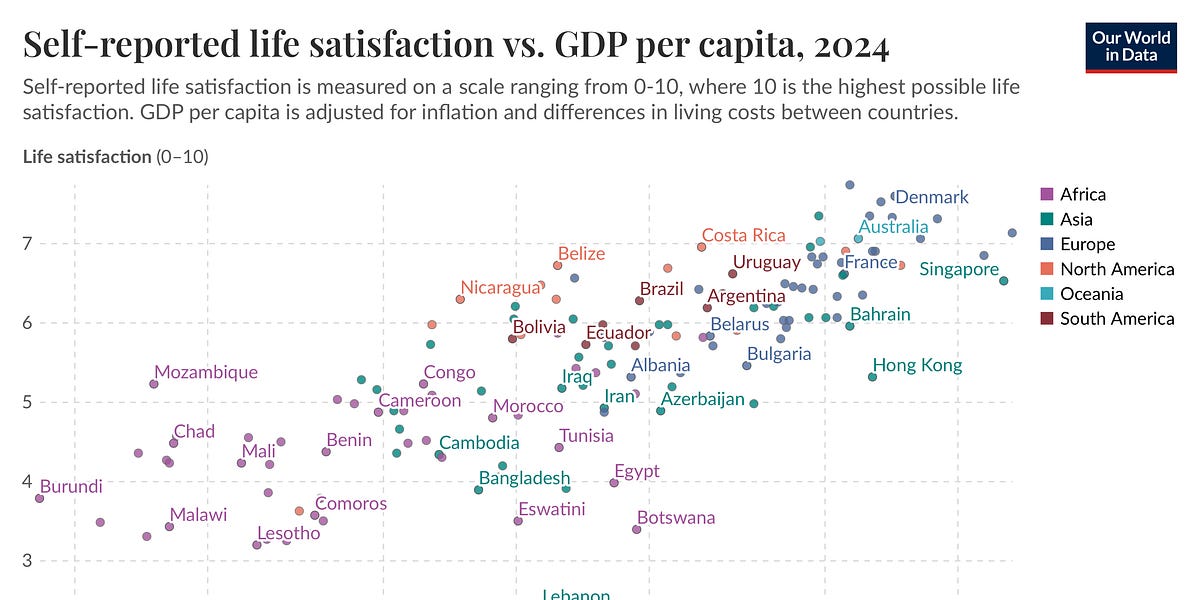
The key to increasing standard of living is increasing labor productivity
Standard of living doesn’t have a strictly agreed-upon definition, but for the sake of anchoring on something, let’s use “the level of income, comforts, and services available to an individual, community, or society” ( Wikipedia).
Gross Domestic Product (GDP) per capita, that is, the average economic output per person in a country, is often used as a proxy metric to compare the standard of living across countries. Of course, this proxy metric, being solely about money, doesn’t directly capture non-monetary aspects of standard of living associated with quality of life or well-being. However, most of these non-monetary aspects are tightly correlated with GDP per capita, rendering it a reasonable proxy.
Our World in Data features numerous plots of such measures against GDP per capita. Here are a few of the ones people tend to care about most:
These measures are clearly tightly correlated to GDP per capita, as are common aggregate measures such as the UN’s Human Development Index that combines lifespan, education levels, and GDP per capita.

%20(1).png)












